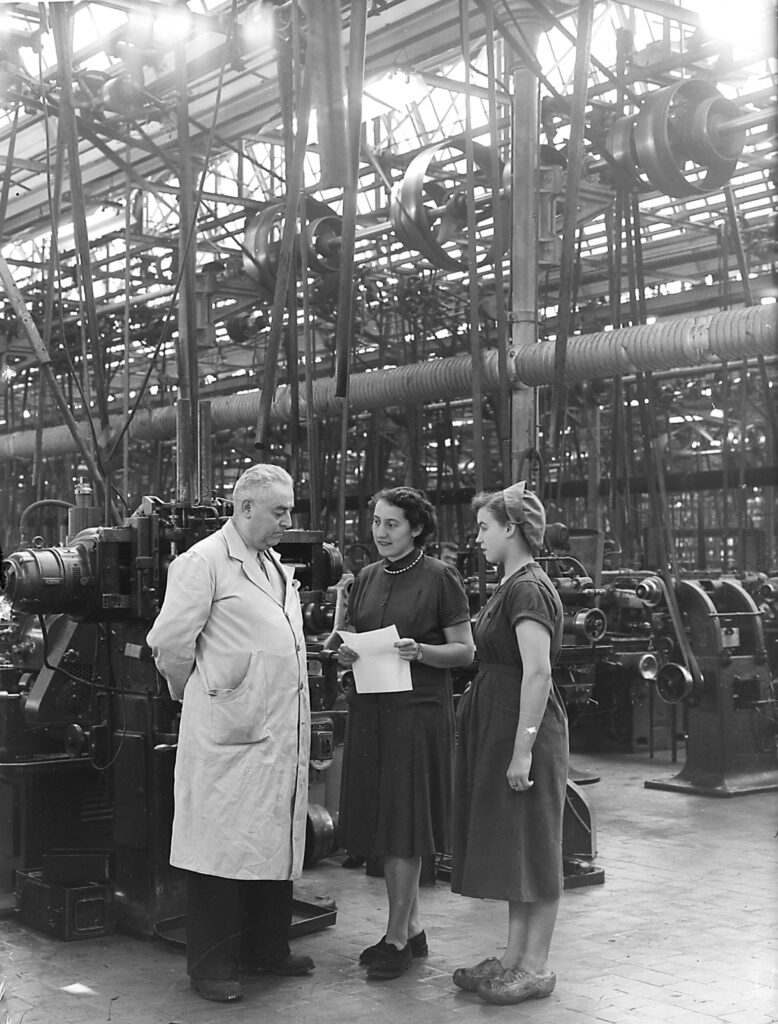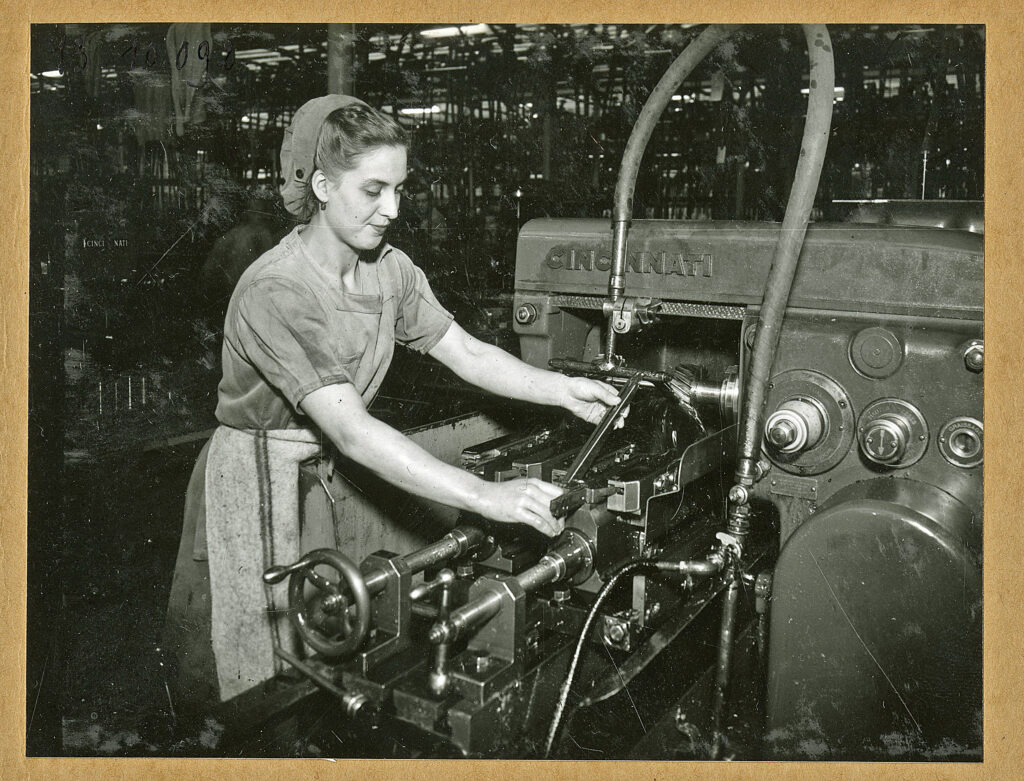Les ouvrières de la FN
La première photographie illustre la présentation d’une nouvelle ouvrière au contremaître au sein du Grand Hall de l’usine. La mise en scène rend compte des différentes catégories de travailleurs (jeune ouvrière, employée, contremaître) qu’on distingue à travers leurs habits de travail, mais aussi dans les poses et attitudes corporelles qui laissent entrevoir la nature des rapports hiérarchiques existants. La jeune ouvrière porte des sabots et un bonnet : deux équipements censés réduire le risque d’accident.
Sur le second cliché, une ouvrière réalise son travail sur machine. Si l’on observe de près cette image, on distingue qu’elle a les mains et les bras luisants à cause de l’huile qui coule en continu sur la pièce à usiner. Elle porte aussi un bonnet pour protéger ses cheveux et un épais chiffon qui lui sert de tablier, sur lequel elle peut régulièrement essuyer ses mains et qu’elle devra laver après sa journée de travail.
The first photograph shows a new worker being introduced to the foreman in the factory’s large hall. The scene highlights the different categories of worker (young female worker, female employee and foreman), who were identifiable not only by the work clothing they wore but also by their posture and body language, indicative of the hierarchical relationships at play within the workplace. The young female worker is wearing clogs and a hat—two pieces of equipment designed to reduce the risk of accidents.
In the second shot, a female worker is pictured working on a machine. If you look closely at the image, you can see that her hands and arms are shiny from the oil constantly running onto the piece she’s working on. She also wears a hat to protect her hair and a thick cloth that serves as an apron on which she can regularly wipe her hands and that she has to wash at the end of her working day.
 © Fondation Ars Mechanica (Herstal, Belgique).
© Fondation Ars Mechanica (Herstal, Belgique).
 © Fondation Ars Mechanica (Herstal, Belgique)
© Fondation Ars Mechanica (Herstal, Belgique)